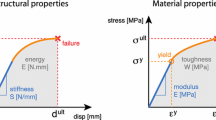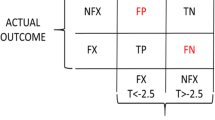Abstract
We read with great interest the recent review by de Bakker et al that summarized the state of several existing and emerging technologies for estimating bone strength and fracture risk in vivo. Much of their review focused on how well the measurements of selected technologies predicted experimental measurements of bone strength by ex vivo quasistatic mechanical testing (QMT) and on how well they tracked changes in mechanical properties of bone. The authors noted that the association of many common skeletal health measurements (e.g., DXA measures of trabecular bone score and areal and volumetric BMD) are only moderately associated with bone strength. The authors did not include mechanical response tissue analysis (MRTA) in their review. MRTA is a dynamic mechanical bending test that uses a vibration analysis technique to make immediate, direct, functional measurements of the mechanical properties (mass, stiffness, and damping) of long bones in humans in vivo. In this article we note our interest in the ability of MRTA to detect large changes in bone stiffness that go undetected by DXA. We also highlight results of our proprietary improvements to MRTA technology that have resulted in unmatched accuracy in QMT-validated measurements of the bending stiffness and estimates of the bending strength (both R2 = 0.99) of human ulna bones. To distinguish our improved technique from the legacy MRTA technology, we refer to it as Cortical Bone Mechanics Technology (CBMT). Further research will determine whether such CBMT measurements are clinically useful.
Similar content being viewed by others
References
de Bakker CM, et al. Clinical evaluation of bone strength and fracture risk. Curr Osteoporos Rep. 2017;15(1):32–42.
Steele CR, et al. Noninvasive determination of ulnar stiffness from mechanical response—in vivo comparison of stiffness and bone mineral content in humans. J Biomech Eng. 1988;110(2):87–96.
Miller LE, et al. Rationale, design and clinical performance of the mechanical response tissue analyser: a non-invasive technology for measurement of long bone bending stiffness. J Med Eng Technol. 2013;37(2):144–9.
Miller LE, et al. Isokinetic resistance training increases tibial bending stiffness in young women. Calcif Tissue Int. 2009;84(6):446–52.
Miller LE, et al. Isokinetic training increases ulnar bending stiffness and bone mineral in young women. Bone. 2007;41(4):685–9.
Wynnyckyj C, et al. A new tool to assess the mechanical properties of bone due to collagen degradation. Bone. 2009;44(5):840–8.
Stone KL, et al. BMD at multiple sites and risk of fracture of multiple types: long-term results from the Study of Osteoporotic Fractures. J Bone Miner Res. 2003;18(11):1947–54.
Siris ES, et al. Identification and fracture outcomes of undiagnosed low bone mineral density in postmenopausal women: results from the National Osteoporosis Risk Assessment. JAMA. 2001;286(22):2815–22.
Wainwright SA, et al. Hip fracture in women without osteoporosis. J Clin Endocrinol Metab. 2005;90(5):2787–93.
Seeman E. Growth and age-related abnormalities in cortical structure and fracture risk. Endocrinol Metab. 2015;30(4):419–28.
Arnold PA, et al. Accuracy and reproducibility of bending stiffness measurements by mechanical response tissue analysis in artificial human ulnas. J Biomech. 2014;47(14):3580–3.
Acknowledgements
This work was supported in part by a grant from the NIH's National Institute on Aging (R01AG044424 to BC Clark).
Author information
Authors and Affiliations
Corresponding author
Additional information
This comment refers to the article available at doi: 10.1007/s11914-017-0346-3.
An author’s reply to this comment is available at doi: 10.1007/s11914-017-0387-7.
Rights and permissions
About this article
Cite this article
Loucks, A.B., Clark, B.C. & Bowman, L. Response to “Clinical Evaluation of Bone Strength and Fracture Risk”. Curr Osteoporos Rep 15, 396–397 (2017). https://doi.org/10.1007/s11914-017-0386-8
Published:
Issue Date:
DOI: https://doi.org/10.1007/s11914-017-0386-8




